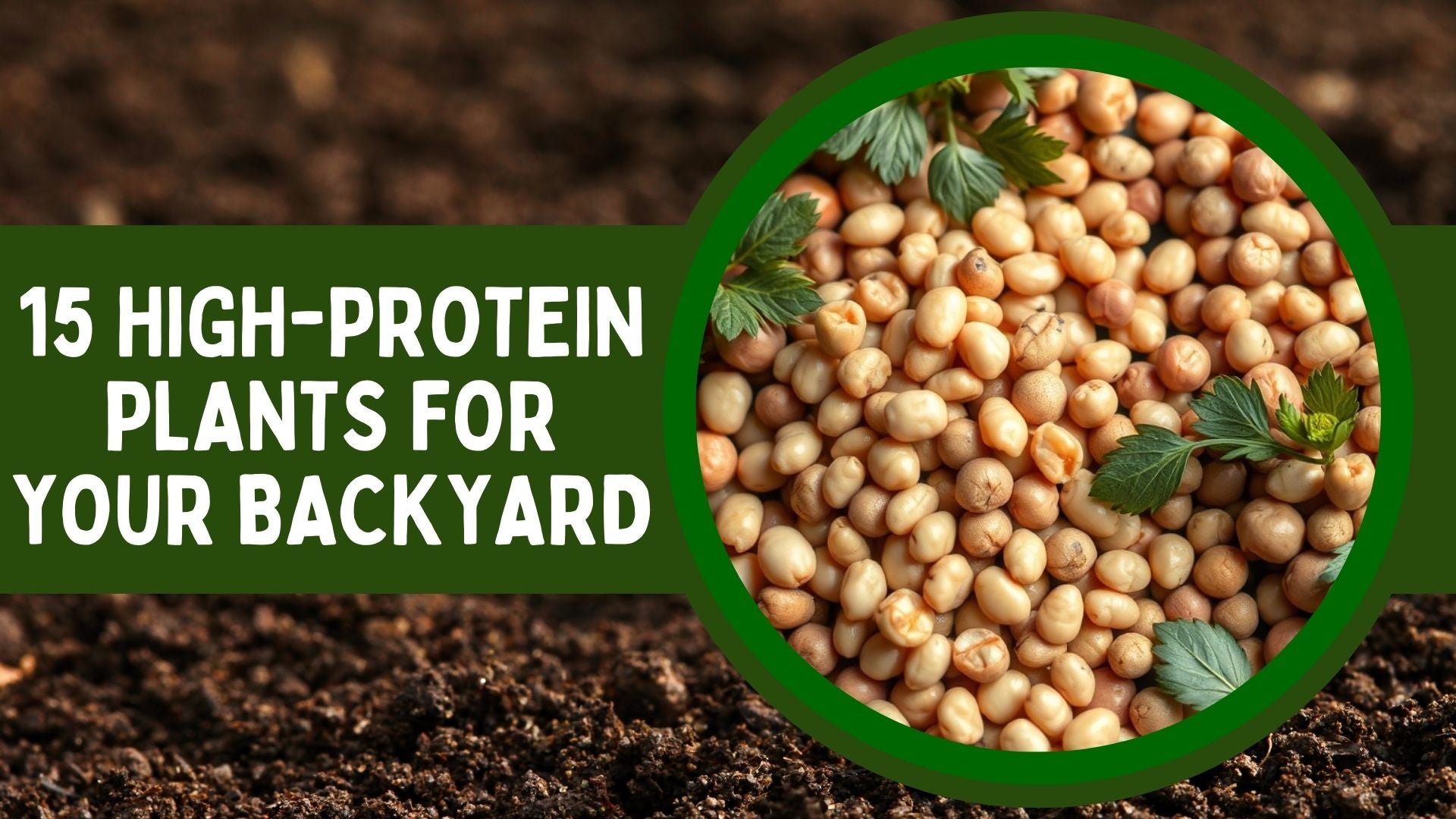Plant-based protein, especially those cultivated in temperate zones and controlled environments, attracts attention to both food quality and environmental sustainability. For those adopting plant-based diets, experimenting with at-home growing methods for sustainable protein sources proves particularly advantageous. Growing your own small greenhouse crops brings convenience and savings. It decreases dependence on grocery stores and farmers' markets while helping to meet dietary needs. Furthermore, food production plays a significant role in global emissions, especially from animal products. Swapping some animal protein for plant-based protein options can lessen these environmental effects as personal greenhouse gardening emerges as a strong approach to reducing carbon footprints.
Our Recommendation: 15 High-Protein Edible Greenhouse Plants
For greenhouse gardening operators and agribusiness entrepreneurs, maximizing crop yield and nutritional quality is paramount. Here is a selection of 15 sustainable protein sources ideal for continuous cultivation in small greenhouses. Each plant possesses unique characteristics that ensure its success and efficiency in controlled environments.
1. Legumes (Beans, Peas, Lentils)
Legumes, which include beans, peas, and lentils, stand for the most important plant-based protein known throughout the world. This group of high-protein vegetables is uniquely distinguished by their ability to form symbiotic relationships with nitrogen-fixing bacteria, predominantly Rhizobium species. By using this symbiotic relationship, legumes are able to fix atmospheric nitrogen into a plant-available form, thus greatly improving the fertility of the soil and reducing dependence on chemical fertilizers. Their relatively short growth cycle, together with a high degree of adaptability to different environmental conditions, enables legumes to be grown optimally in greenhouses. Their versatile use in many culinary applications further guarantees a stable demand, and thus a profitable option for year-round gardening.
Some protein datas per 100 g from Healthline and USDA:
- Common beans: 24 g
- Pigeon peas: 22 g
- Mung beans, raw: 24 g
- Chickpeas: 19 g
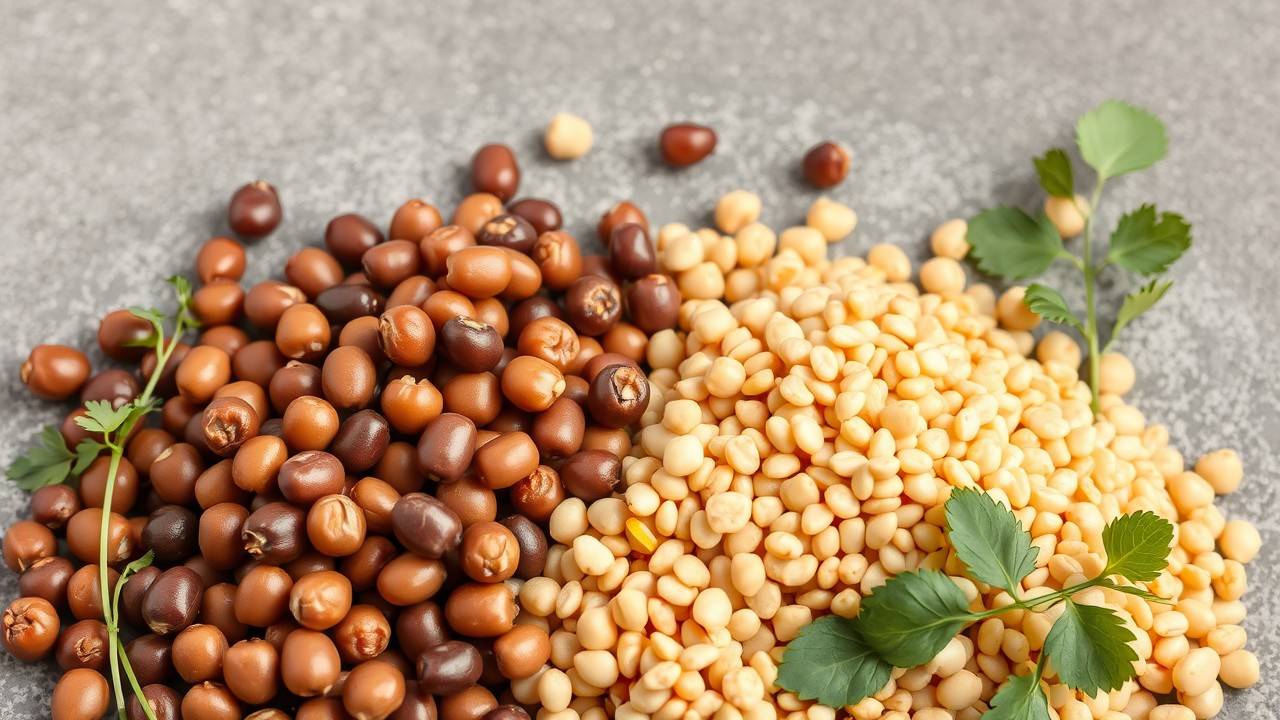
2. Leafy Greens (Spinach, Kale, Collards)
Leafy greens are well-renowned for their nutritional density and rapid growth rates. Spinach, kale, and collards are all nutrient-dense with a fair amount of protein for the caloric content. These plants all can handle variable light and temperature, and thus, have a good potential for greenhouse gardening production. The greenhouse-controlled environment minimizes pest pressure, enabling continuous intake of fresh produce and appeals more to health-conscious consumers. Besides, leafy vegetables can be produced many times in the year-round gardening, securing a continuous flow of income for the operator.
Protein data from USDA:
- Spinach: 2.9 g
- Kale: 4.3 g
- Collards: 3 g
3. Broccoli and Other Brassicas
Brassicas are those vegetables that encompass broccoli, cauliflower, and brussels sprouts-all very nutritious, decently protein-laden, and full of vitamins, minerals, and phytochemicals. Their cold tolerance provides them an advantage in cooler months. A greenhouse will enable the best growth conditions, and avoid exposing crops to some of the minimal pest and disease attacks.
Protein data from USDA:
- Broccoli: 2.8 g
- Brussel sprouts: 3.4 g
- Mustard greens: 2.9 g

4. Asparagus (2.2 g/100 g)
Asparagus is a perennial vegetable that produces not only high-quality plant-based protein but also holds many essential vitamins and minerals. The perennial growth habit allows this crop to be produced for a longer time under greenhouse conditions with multiple harvests in successive seasons. There is less need for care to maintain the plants when mature, thereby offering efficiency within the greenhouse gardening operation. This commodity also has excellent potential market value when fresh or value-added with specialty products.
5. Artichokes (3.3 g/100 g)
Though artichokes are not listed among the top high-protein vegetables, these small greenhouse crops still have impressive amounts of this protein, added to a number of other nutritional elements, including antioxidants. Their unique growth requirements are controlled by the greenhouse environment for optimum growth at any time of the year. Growing these vegetables in greenhouses will also protect them from extreme conditions and infestation, which improves the yield in both quality and quantity.
6. Figs (6.31 g/100 g (dry weight basis, DW))
Although figs are essentially fruits, they do have a surprisingly high protein content. Figs grown in a greenhouse are provided with those ideal climatic conditions that the tree seems to like and, hence can produce fruits throughout the year. The flavor of figs is also very strong, so their selling can be done as fresh or as dried fruit, luring consumers with delicacies that possess a different flavor profile.
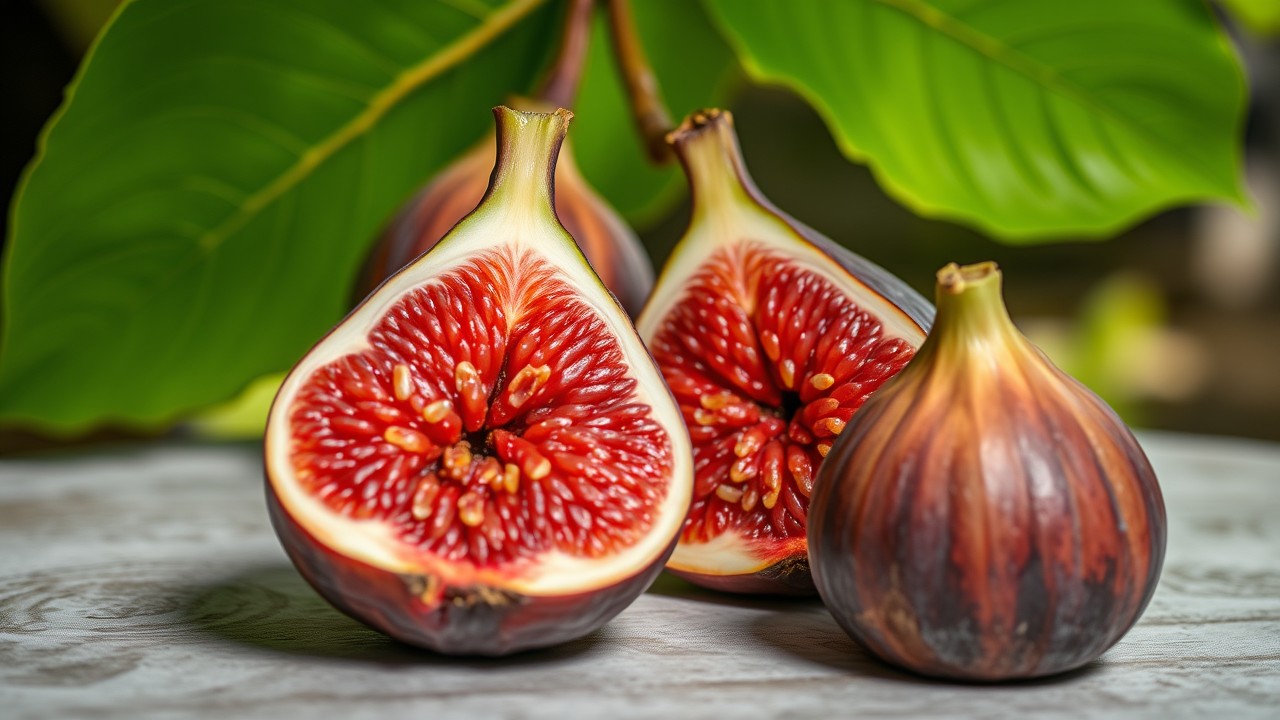
7. Guava (2.6 g/100 g)
Guavas are brilliant, tropical fruits highly recognized by their contents of ascorbic acidity and protein. This plant also grows very well in small greenhouses where the farmer has full control over the conditions of temperature and humidity. Guavas can ensure decent economic returns due to their demand in fresh fruit markets, juices, and jams.
8. Mulberries (1.4 g/100 g)
Other options available to greenhouse farmers in their search for high-protein crops are mulberries. These berries prefer consistent temperatures and protection, so they lead to healthier plants with longer fruiting seasons. It is also in higher demand due to its flavor and versatility in culinary dishes. Fast growth and moderate susceptibility to pests add to their appeal for out-of-season production. (Read more: Mulberries)
9. Blackberries (1.4 g/100 g)
Blackberries offer both nutritional benefits and a delightful sweetness, providing protein along with essential vitamins and antioxidants. Blackberries grown in a greenhouse environment bring about better yield management, pest control, and an extended growing season. These fruits have high demand in the market, especially for health-conscious consumers; therefore, it is a very profitable endeavor.
10. Passionfruit (2.2 g/100 g)
Passionfruit stands out for its fragrant taste and bright hue, offering a wealth of protein, vitamins, and dietary fiber. Passionfruit thrives in warm environments, making it ideally suited to greenhouse cultivation, where growers can maintain optimal temperature and humidity levels for flowering and fruiting throughout the year.
11. Quinoa (4.4 g/100 g, cooked)
Quinoa is increasingly recognized for its status as a complete protein source, housing all nine essential amino acids. It has gained huge popularity because of its health benefits and, thus, is in high demand in health food markets. Greenhouse production can efficiently control those very particular climatic conditions: quinoa needs moderate temperatures and well-draining soil for successful year-round production.
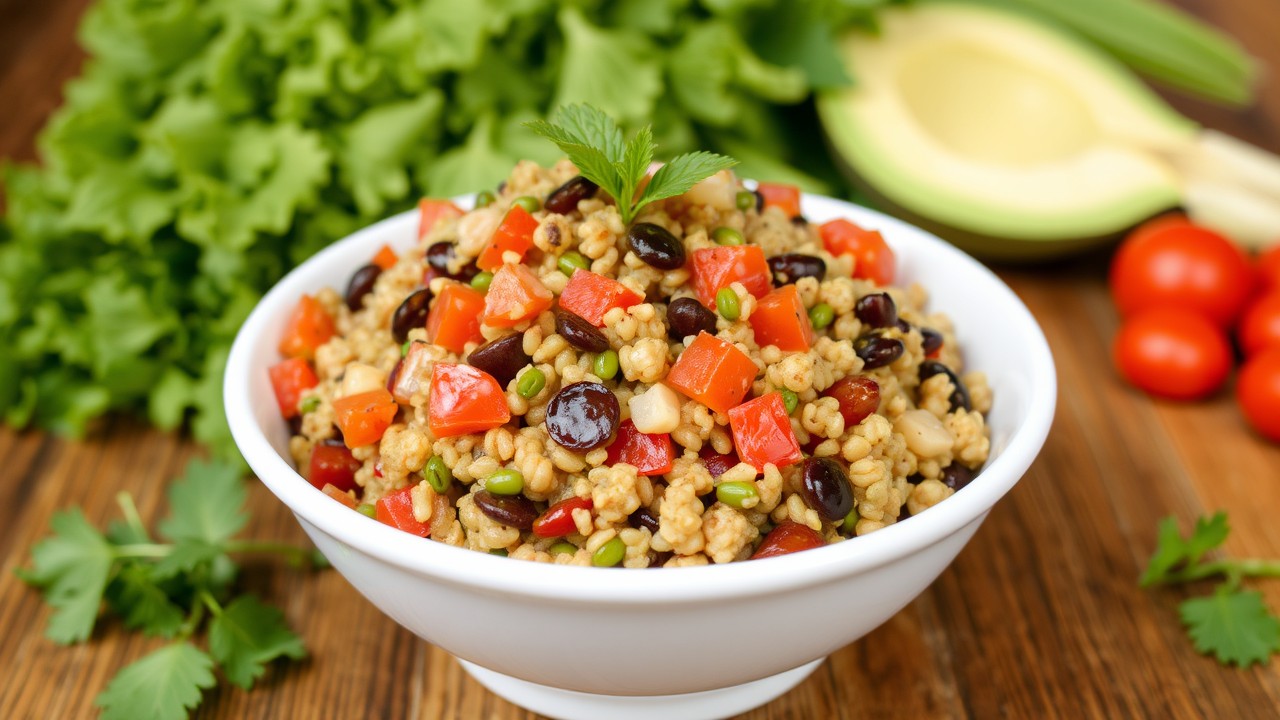
12. Amaranth (3.8 g/100 g, cooked)
Both its leaves and seeds have a high protein value, which makes this plant very diverse for a small greenhouse. Amaranth is valued because it is resistant to different weather conditions; it can give a very good yield even in poor conditions. In general, growing amaranth in the greenhouse will improve the quality of the crop and cater to an increased interest in ancient grains and a variety of diets.
13. Edamame (11.5 g/100 g, cooked)
Edamame is famous for its high protein content and thus serves as a staple in many vegetarian and healthy lifestyle diets. Such plants prefer controlled environments, making them suitable for multiple cropping seasons. The fact that they are increasingly finding their place in restaurants and supermarkets boosts their viability in the market, hence a promising high-protein candidate for greenhouse production throughout the year.
14. Moringa (9.4 g/100 g, raw)
The moringa tree has been praised for its extremely high concentration of protein and wealth of vitamins and minerals. It can be produced under the conditions that please the needs of its growth in a greenhouse, producing nutrient-rich leaves that can be used either in a variety of culinary applications or as a health supplement. Moringa's growing popularity as a superfood places this product advantageously within health-conscious markets.
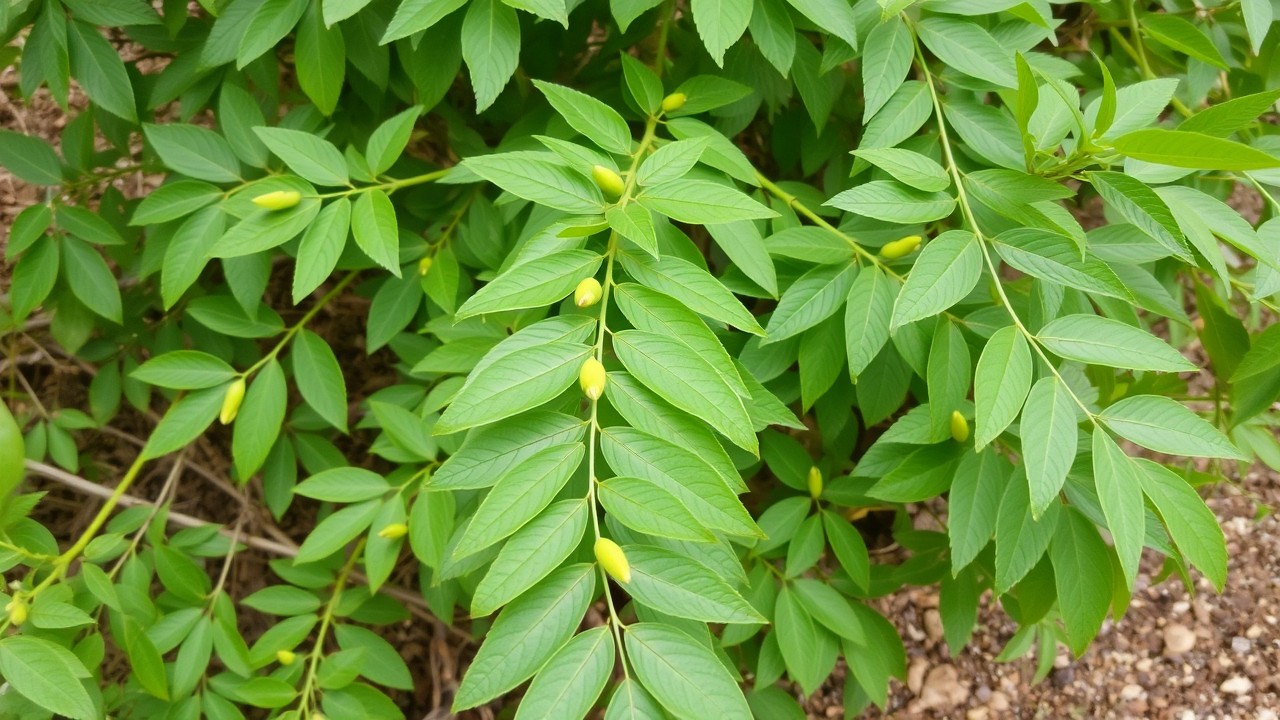
15. Spirulina (in Aquaponic Systems) (57 g/100 g, raw)
Spirulina is a cyanobacteria-blue-green algae known for its phenomenal protein production and vast nutritional benefits. When added to aquaponic systems in small greenhouses, it can be grown alongside fish, creating a symbiotic effect that furthers the growth within a small greenhouse environment. The use of spirulina would not only supplement the needs of the consuming population but also contribute to more environmentally friendly agriculture, following the growing desires of consumers for Earth-friendly methods of production.
Conclusion
The high-protein plants outlined above represent a strategic selection that combines nutritional benefits with favorable growth characteristics in controlled environments. By carefully managing greenhouse conditions and implementing effective practices, growers can optimize yield and ensure a continuous supply of nutritious produce that caters to evolving demands. These small greenhouse crops not only contribute to bolstering food security but also play a vital role in promoting healthy dietary options within communities.
👇Other topics you might care about:
1. Maxmize Your Greenhouse Year-Round: Housing Chickens Inside for Winter
2. Beat the Frost: A Comprehensive Guide to Greenhouse Heating Systems

